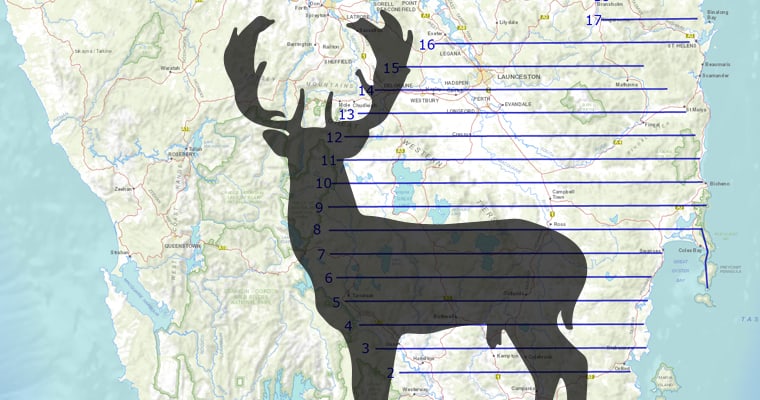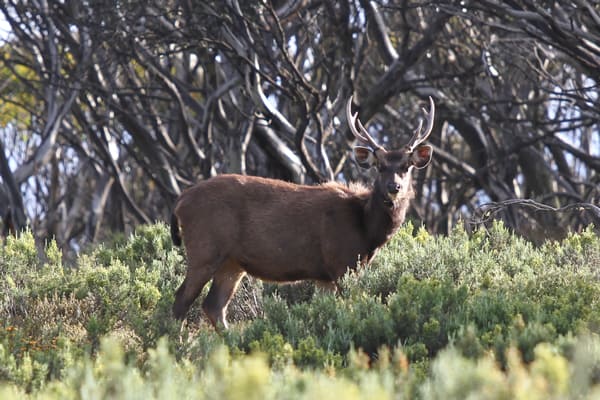The Tasmanian Government is developing a management plan to control growing numbers of deer in that state and is asking for community input before the first draft is published in early 2021.
It is critical the new plan deals with all of the issues created by deer in Tasmania – their environmental impacts, impacts on farmers, and how recreational hunting of deer is managed.
Deer were introduced into Tasmania in the 1830s. Recently the population has expanded, with an aerial survey putting their numbers at 54,000 in the area surveyed, about a third of Tasmania.
The total number of deer in Tasmania is likely to be much higher – the survey did not take into account known populations in the northwest, in the south near Dover and on Bruny and King islands. Also, the survey took place at a time of year when the population was likely to be at its lowest: at the end of the hunting season and when control efforts under crop control permits had finished.
Deer take a heavy toll on the natural environment, destroying native vegetation by trampling and grazing. They ringbark trees, foul waterholes, cause soil erosion and spread weeds.
Deer also hurt farmers. The Tasmanian Farmers and Graziers Association recently told a special Senate hearing into the impacts of fallow deer in Tasmania that the animals cost the state’s agricultural industry at least $10 million annually, possibly as much as $80 million a year.
Despite this, feral deer are partially protected with rules designed to limit their control, guaranteeing deer persist and spread as a resource for hunters. There is no effective on-ground effort to keep deer out of high conservation areas like the Tasmanian Wilderness World Heritage Area.
Have your say
Some of the key issues that the Tasmanian government says will be addressed in the plan include:
- Management of deer impacts on private or primary production land.
- Management of deer impacts on natural and cultural values.
- Management of satellite deer populations and in areas currently free from fallow deer.
Written feedback
The Tasmanian Government is inviting written feedback on deer management which it says will help inform the drafting of a deer management plan.
Feedback for the draft plan should be provided by 11 December 2020.
- Send feedback to: Project Manager
Wild Fallow Deer Management Plan Project
Email: DeerManagementPlan@dpipwe.tas.gov.au
Please also send us a copy of your submission by emailing it to: contact@invasives.org.au
We urge you to make a submission to have an environmental centred deer management plan. Here are some point you can make in your submission:
- Ensure the goal of the plan is to reduce the environmental and economic impacts of feral deer and limit their spread.
- Manage feral deer in Tasmania as a pest animal in line with the rest of Australia.
- Remove the special protection deer receive under the Tasmanian Wildlife Regulations, allowing unrestricted year-round deer control on all land tenures.
- Conduct a detailed survey of deer encroachment on the Tasmanian Wilderness World Heritage Area.
- Remove all deer inside the Tasmanian Wilderness World Heritage Area and other conservation areas and establish containment boundaries to prevent their spread in the future.
- Eradicate deer from Bruny Island within two years.
- Eradicate other small isolated deer populations and keep deer free areas deer free.



